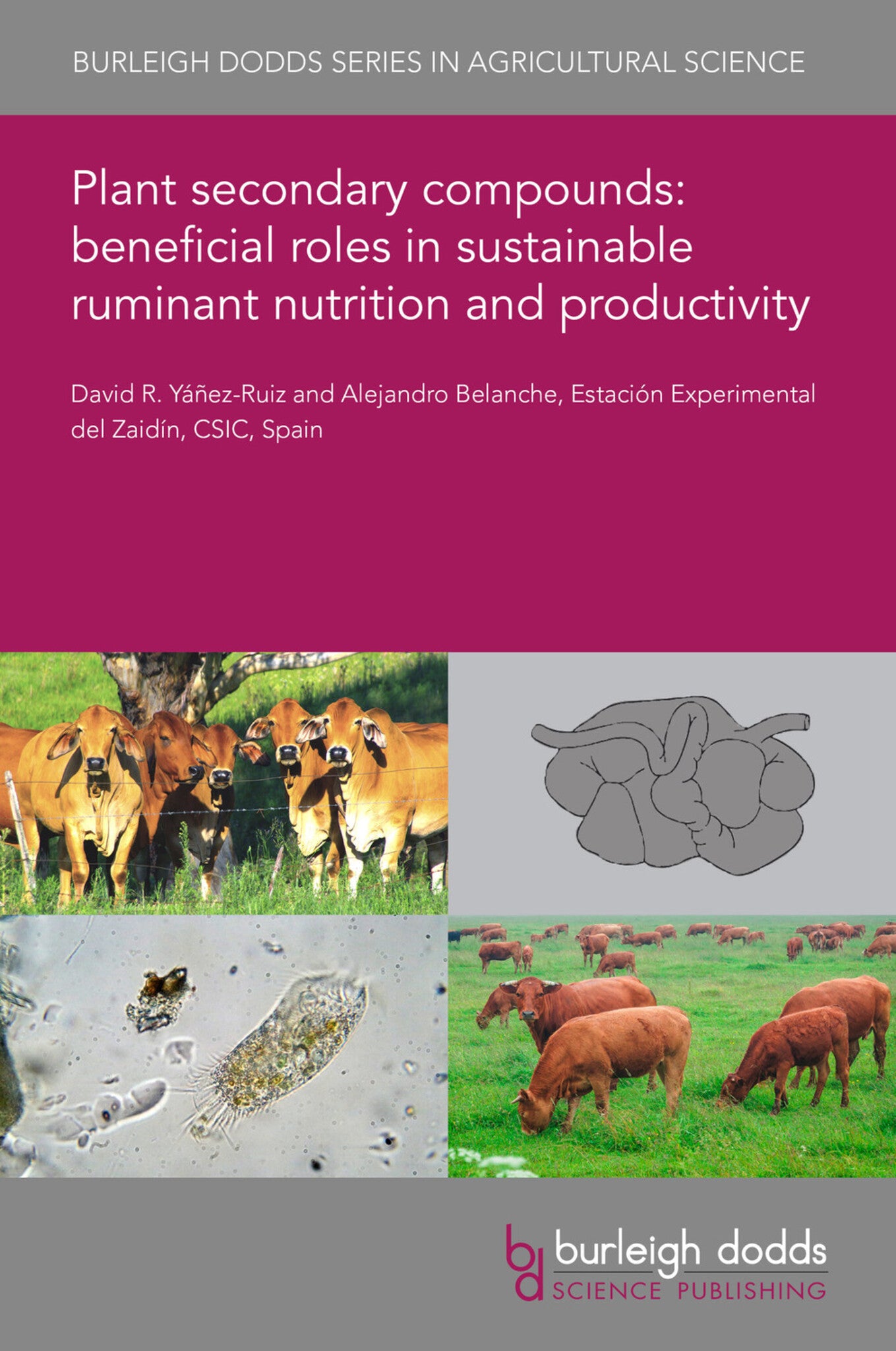We're sorry. An error has occurred
Please cancel or retry.
Plant secondary compounds: beneficial roles in sustainable ruminant nutrition and productivity
Regular price
£25.00
Sale price
£25.00
Regular price
£25.00
Unit price
/
per
Sale
Sold out
Re-stocking soon
Plant secondary compounds, also known as phytogenics or phyotochemicals offer interesting opportunities to improve rumen function and livestock productivity in the current production systems as man...
Read More

Some error occured while loading the Quick View. Please close the Quick View and try reloading the page.
Couldn't load pickup availability
- Format:
-
22 June 2020

Plant secondary compounds, also known as phytogenics or phyotochemicals offer interesting opportunities to improve rumen function and livestock productivity in the current production systems as many plants produce secondary metabolites that, when extracted and concentrated, may exert modulation of the activity of gut microorganisms. Phytochemical feed additives are an extremely large group of compounds with great diversity in chemical structure and bioactivity. This chapter describes the composition, activity, effects on rumen function and animal performance of three major groups of plant secondary compounds: essential oils, tannins and saponins. The positive effects of these compounds include more efficient use of dietary protein and energy and decreased methane emissions, which sometimes result in increased milk yield or liveweight gain. However, despite extensive research conducted in the last decades, the use of plant extracts as feed additives in ruminant livestock is still limited by several factors, which are discussed in this chapter.

Price: £25.00
Publisher: Burleigh Dodds Science Publishing
Imprint: Burleigh Dodds Science Publishing
Series: Burleigh Dodds Series in Agricultural Science
Publication Date:
22 June 2020
ISBN: 9781786768100
Format: eBook
BISACs:
TECHNOLOGY & ENGINEERING / Agriculture / Animal Husbandry, Dairy farming, TECHNOLOGY & ENGINEERING / Agriculture / Sustainable Agriculture, Sustainable agriculture, Animal husbandry

1 Introduction 2 Essential oils (EO) 3 Tannins 4 Saponins 5 Future trends and conclusion 6 References



